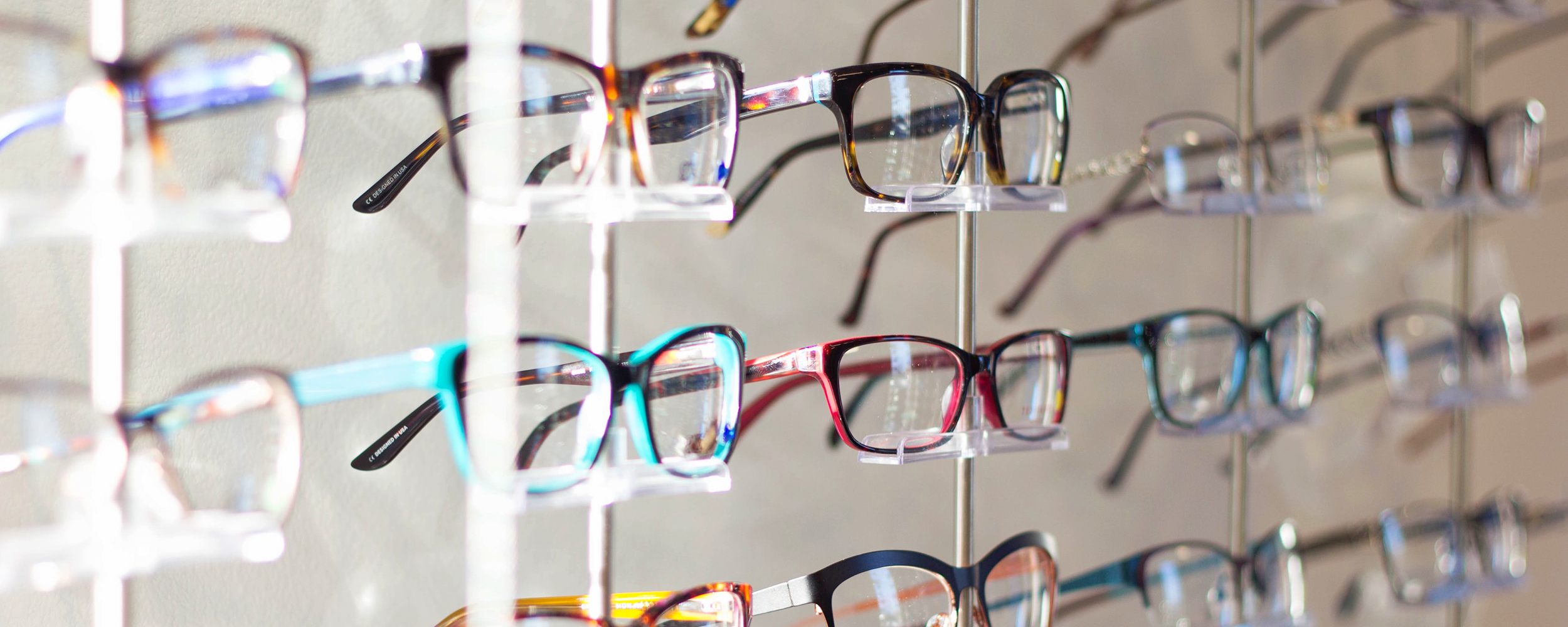

Lenses
There’s a lot to consider once your eye exam is over and you’ve got your prescription in hand. Our labs house state of the art optical lab equipment that ensures pinpoint accuracy in manufacturing prescription lenses. They strive in using the latest technology and industry best practices available in all stages of production.
“I have always strived to have the “best” high quality frames that are distinctive, fashionable and a true reflection of my personality. When it came to lenses, I wondered about the need for digital quality lenses. I recently purchased a pair of gorgeous Boz frames from Chantal and was considering lens options — after speaking with Chantal, she convinced me that it was critically important to have high calibre lenses for my best eyesight. So, I decided to give them a try.
When I picked up my new stunning glasses and she placed them on my face, my first words were “OH MY GOSH MY SIGHT IS SO CRISP!
The difference was truly unbelievable. I will be back to buy future pairs. Chantal’s expertise, frame collection and quality of lenses is truly one-of-a-kind. And well — I always loved a boutique experience! I will never revert back to the lower cost imitations”.
— J. J.
Single Vision
Single vision lenses are for people who only need one type of correction at a time. This correction may be for distance, computer, or reading.
This may sound pretty straightforward but there are many different types of single vision lenses on the market today, and that’s why there can be a significant range in cost for seemingly simple prescriptions. There’s much to consider!
Let’s take computer glasses, for example. You may have heard of blue-blocking lenses that are made especially for people who spend long hours on devices (surprise: that’s most of us). Sometimes this filtering technology is built right into the lens and sometimes it’s a coating, which can affect both cost and appearance. When the filter is built in, the lenses can look a little yellow or if it’s a coating, they might even appear more reflective – that’s because coatings show a bit of the colour they’re absorbing.
Either way, these lenses do a great job of protecting our eyes from getting too much blue light. Talking to your optician about your lifestyle will be the best way to determine which option is the right one for you.
Progressive or Multifocal Lenses
Sometimes incorrectly referred to as no-line bifocals (they’re technically trifocal), these lenses are for folks who need help with their distance, computer, and reading.
Progressive lenses tend to strike fear in the hearts of the uninitiated. The stories of negative experiences abound and with the seemingly endless amount of options (and price tags) for progressives, it feels difficult to make a confident buying choice.
Part of what can make wearing progressives an unpleasant experience is how new the technology is behind the lens. When progressives first came out onto the market, digital technology wasn’t really available.
What did this mean for wearers? Well, their progressives had a very narrow field of view from side to side and your eyes had to really travel down the lens to hit that reading correction. They also had distortion, which is every new progressive wearer’s worst fear.
With newer technology, this tends to be less of an issue. Of course, there are still progressive lenses available on the market that are made with older technology – they’re much less expensive than their newer counterparts – and they tend to have more distortion.
This doesn’t always mean you have to jump to the latest and greatest progressive lenses, though.
Your prescription is the best indicator of how much you should invest in your progressives. People with high prescriptions, or people with low distance correction and high reading correction (hint: if the ‘add power’ part of your prescription is +2.00 or more) will want to consider investing in a better-than-average set of lenses to avoid a major struggle to adapt.
If the add power is quite low, like +1.00 or +1.25, you won’t necessarily need to purchase the absolute best available. As the add power goes up over the years, that’s when you’ll want those better lenses to keep your field of view wide and distortion low.
Always remember that no matter how great the lenses are, you’ll almost certainly need time to adapt to progressive lenses – it usually takes two weeks to get used to them. The first few days can be tough but things like not switching back to your old glasses too often and making sure the glasses are adjusted properly usually help.
And for peace of mind, make sure you are buying from an optician who offers a satisfaction guarantee.
Office Progressives
The Office Series is specifically designed for reading and computer focal lengths. This progressive lens reduces eyestrain and improves clarity at shorter distances. The lens designs are perfect for users that require an extended near and intermediate zones for working tasks. Experience comfort and clarity for reading and computer work. Its focused on providing the visual acuity you need working at shorter distances.
A Wider Field of View
The Office Series gives wearers all day comfort by allowing them to work in a natural posture. The expanded near and intermediate visual zones reduce the unnecessary head and back movements for reading or working on the computer.
Stock vs. Digital Lenses
Let’s start by outlining the main differences between these two types of lenses.
Stock lenses are pre-made lenses based on common prescriptions. There’s usually a coating on them: either a basic scratch-resistant coating or an anti-reflective coating. Because these lenses are pretty much ready to go, getting your glasses made with stock lenses takes a lot less time and tends to be less expensive. Stock lenses are the reason some glasses can be made in the same day.
But if you’ve got a higher prescription (especially a high astigmatism), you’re less likely to have stock lenses available to you.
On the other hand, digital lenses are completely customized and made-to-order. They take advantage of the latest technology in order to provide crisp optics and a wider field of vision, and they’re often made with the best anti-reflective coating on the market. They require additional measurements based on how the frame fits to you for a completely customized set of eyewear. Because there’s more involved, these lenses take longer to make and are generally more expensive.
If you don’t wear your glasses often and don’t have a very high prescription, chances are you’ll be happy with stock lenses. For people who wear glasses all day (except for when you’re sleeping) you might enjoy the experience of wearing digital lenses.
Anti-Fatigue Lenses
Sometimes referred to as “baby progressives”, anti-fatigue lenses exist somewhere between digital single vision lenses and progressive lenses.
They sound a lot like progressives because they have your distance correction at the top of the lens (picture this as your driving distance) and as you start to look down through the lens (think of this as your computer distance or mobile phone distance), the prescription starts to change a little.
Simply put, it’s your distance correction but not at full strength, which helps your eyes to relax when they’re looking at things up-close. This means no tired, strained eyes at the end of the day.
Lens Treatments
Hard Coating
A protective film applied to protect the plastic-based lens from everyday use.
Anti Reflection
Virtually eliminate reflection/glare on the surface of the lens
Blue Light Filter
Prevent the short and long term risks of harmful Blue light
Transitions
A light adaptive lens that accommodates to the intensity of UV light.
Polarization
Eliminates horizontal glare from reflected light on flat surfaces.
Mirror Coating
Protect your eyes and add mirror coating to your sunglasses.
UV Light Filter
UV coatings to protect your eyes from harmful UV rays.

